LEVUSH MALKHUT- R. MORDEHAI JAFFA (printed in Berdichev)
Courtesy: Virtual Judaica
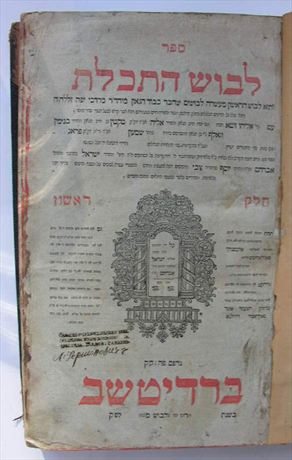 |
|
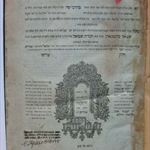
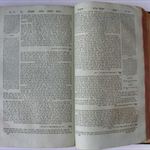

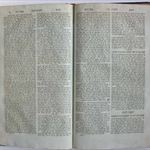
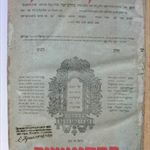
Detail Description
R. Mordecai b. Abraham Jaffee (c. 1535–1612), talmudist, kabbalist, and communal leader. Born in Prague, R. Jaffe was sent as a boy to Poland to study under R. Solomon Luria and R. Moses Isserles. There he devoted himself also to the study of astronomy and philosophy (apparently at the instance of R. Isserles). At the same time he studied Kabbalah under R. Mattathias b. Solomon Delacrut. After a few years he returned to Prague, where in 1553 he was appointed head of the yeshiva. Very soon he discovered that the students were not interested in mere understanding of the Talmud but preferred "pilpul" and "were turning the word of the living God into false, corrupt, and evil words" (Preface to his Levush Malkhut). R. Jaffe chose therefore "to minimize the time spent with these students" and applied himself to writing constructive books. He was head of the yeshiva in Prague until 1561, when, by order of the emperor Ferdinand, the Jews were expelled from Bohemia. Jaffe then went to Venice and studied astronomy (1561-71). In 1572 he was elected rabbi of Grodno; in 1588, rabbi of Lublin, where he became one of the leaders of the Council of Four Lands. Later R. Jaffe accepted the rabbinate of Kremenetz. In 1592 he was called as rabbi to Prague; from 1599 until his death he occupied the position of chief rabbi of Posen.
Hebrew Description
לבוש מלכות לבוש התכלת לבוש החור לבוש עטרת זהב גדולה לבוש הבוץ וארגמן לבוש עיר שושן ... העיר ה' רוח ... השותפים ... ישראל בהרבני ... אברהם (ב"ק) וה"ה ... יוסף במהור"ר צבי מדפיסים דפה, להעלות מחדש להספרי עשרה לבושים על משבח הדפוס ... חלק א-ה.ספירת הדפים משובשת. שם הספר ומקום הדפוס בצבע אדום. נייר כחלחל. נדפסו כאן חמשת ה"לבושים" הראשונים בסדרת חיבוריו של ר' מרדכי יפה. החיבורים שנדפסו כאן מקיפים ההלכות שבארבעת חלקי השולחן ערוך.
הסכמות: ר' אברהם יהושוע העשיל מאפטא, מעזיבוז, ערב ראש-חודש סיון [כט אייר] תקע"ז; - חלק א ר' ישראל ב"ר לוי יצחק, בארדיטשוב, איסרו-חג דשבועות [ח סיון] תקע"ז; - חלק א ר' מרדכי ב"ר מנחם נחום [טווערסקי] מטשארנבול, ב מנחם-אב תקע"ז; - חלק א ר' אברהם דוב בער [מאוורוטש] מחמעלניק, יז מנחם-אב תקע"ז; - חלק א ר' יוסף ב"ר משה, קאסנטין ישן; - חלק א ר' יצחק אייזק ב"ר בצלאל מסאקעליבקע, בארדטשוב, ראש-חודש אלול תקע"ז; - חלק א דייני בארדיטשוב; ר' יוסף ב"ר אברהם אבא, ר' יעקב קאפיל ב"ר משה ור' ארי' ליב ב"ר יצחק, ראש-חודש מרחשוון תקע"ח. - חלק א
חלק א: לבוש התכלת ... בחלק הראשון מטור האורח חיים [סימנים א-רמא] ... עם פי' אליהו זוטא, חברו ... ר' אליה' [שפירא] אב"ד דק"ק טיקטין. בשנת ומרדכי יצא ב'ל'ב'ו'ש מ'לכות [תקע"ח]. סד דף. דף ב: הקדמת ר' מרדכי יפה לחלק א, הקדמת ר' אליהו שפירא ו"מעשה רב", "שנעשה בזמן הגאון ר' מרדכי יפה", "מתוך ספר דרך משה (לר' משה ב"ר מאיר הכהן, אמשטרדם תנ"ט). חלק ב: לבוש החור ... בחלק שני מטור האורח חיים [סימנים רמב-תרצז] ... עם פי' אליהו זוטא. בשנת ו'מ'ר'ד'כי יצא ב'ל'ב'ו'ש' מ'לכות [תקע"ח]. [1], סה-ר דף. חלק ג: לבוש עטרת זהב גדולה ... בטור יורה דעה. תקע"ט ק"ף דף. חלק ד: לבוש הבוץ וארגמן ... בטור אבן העזר. לפרט כי האיש מ'ר'ד'כי ה'ולך וגדול [תקע"ט]. [1], פח [צ"ל: פד] דף. חלק ה: לבוש עיר שושן ... בטור חושן המשפט. לפרט כי ה'א'י'ש' מ'ר'דכי ה'ולך וגדול [תקפ"א]. קף [צ"ל: קנח] דף.
Reference Description
CD-EPI 0136561; R. M. Amsel, "Mi-Toledotav shel Rabbenu ha-Levush" in: Mordecai Jaffe, Levush Malkhut, 2 (Levush ha-Hur; 1964); Graetz-Rabbinowitz, 7 (1899), 350–5, 429–34; S. A. Horodezky, Le-Korot ha-Rabbanut (1911), 145–74; S. M. Chones, Toledot ha-Posekim (1910), 314–8; S. B. Nissenbaum, Le-Korot ha-Yehudim be-Lublin (1900), 25–27; Waxman, Literature, 2 (1960), 150–2; EJ; JE